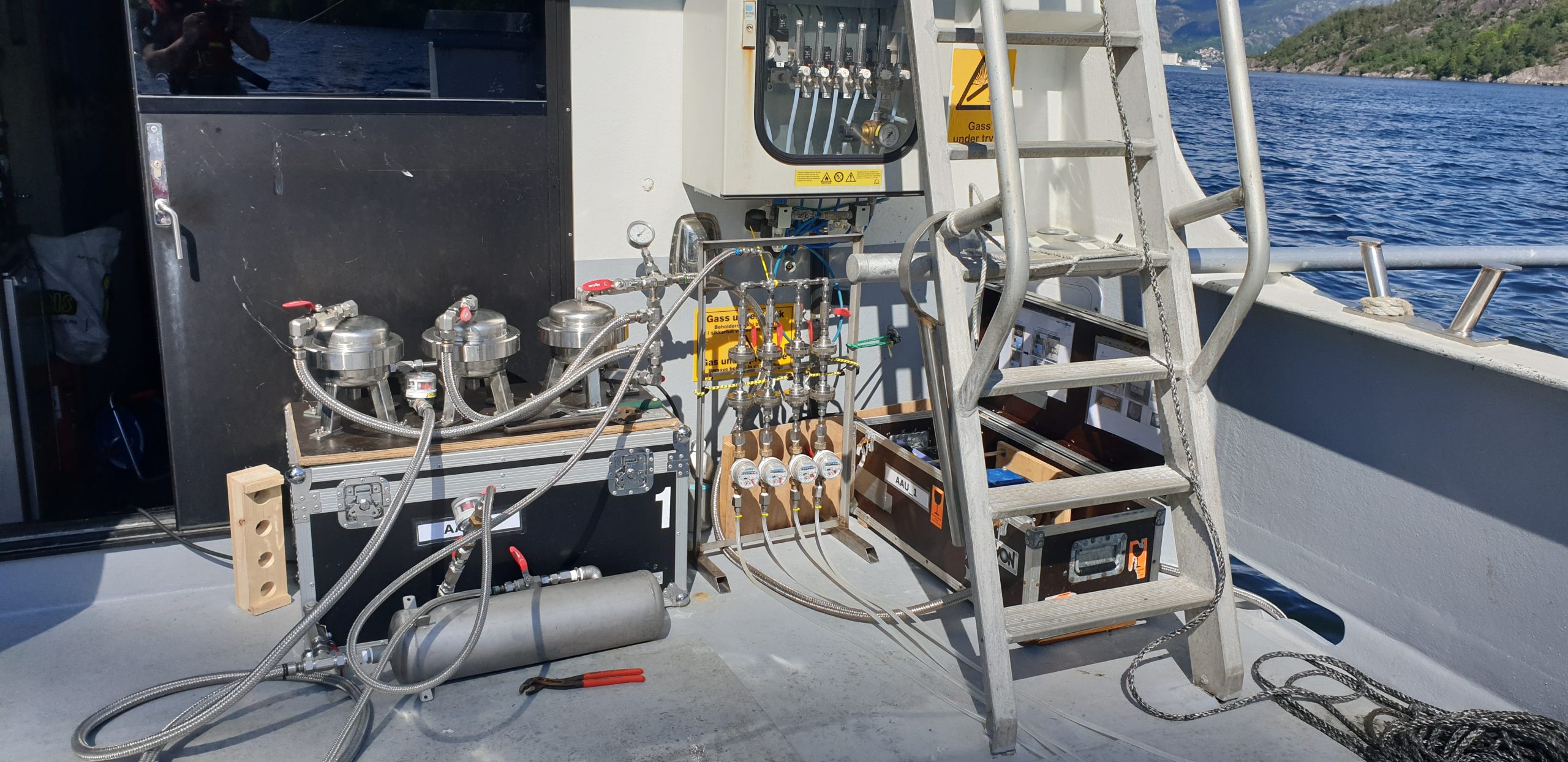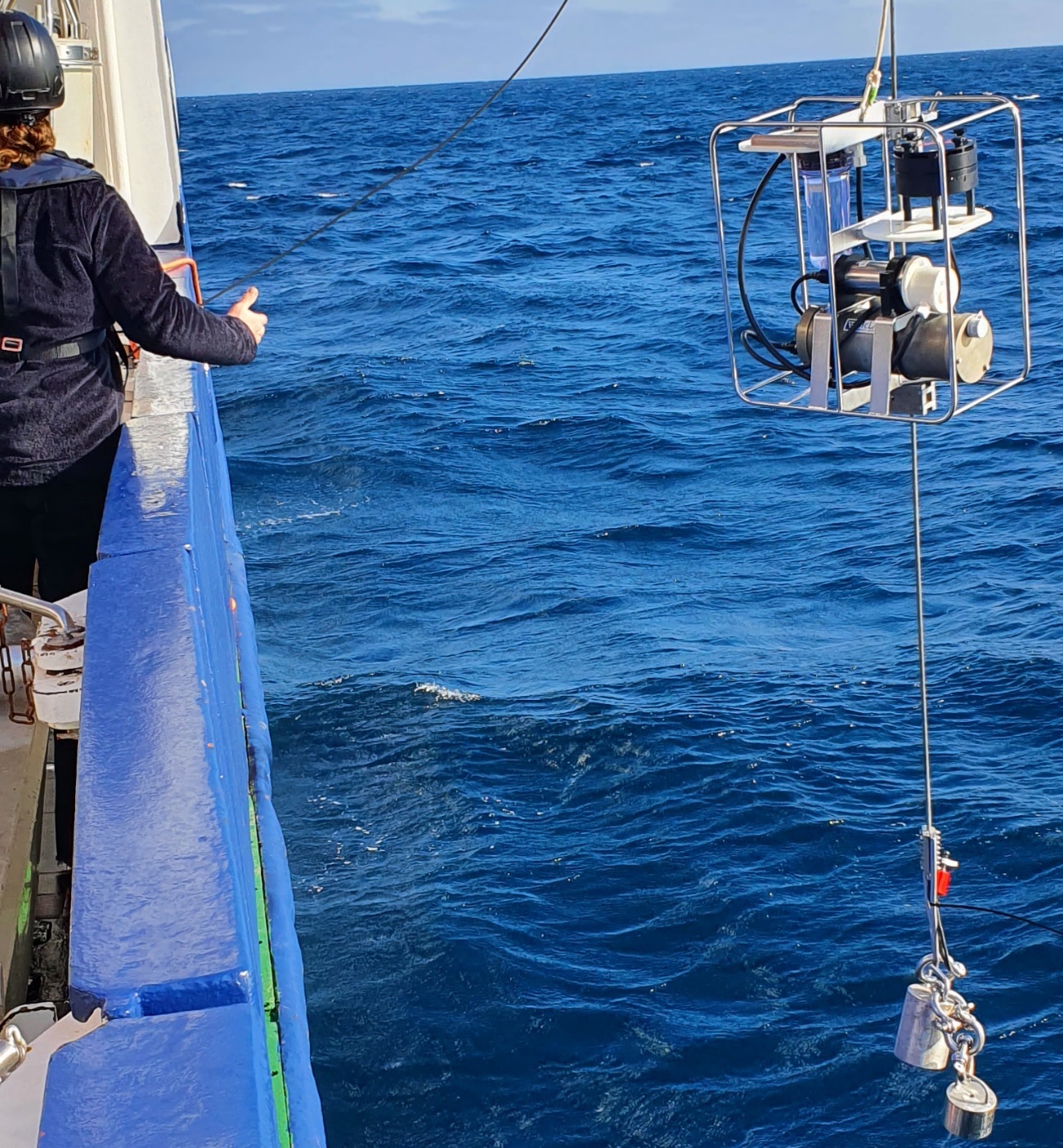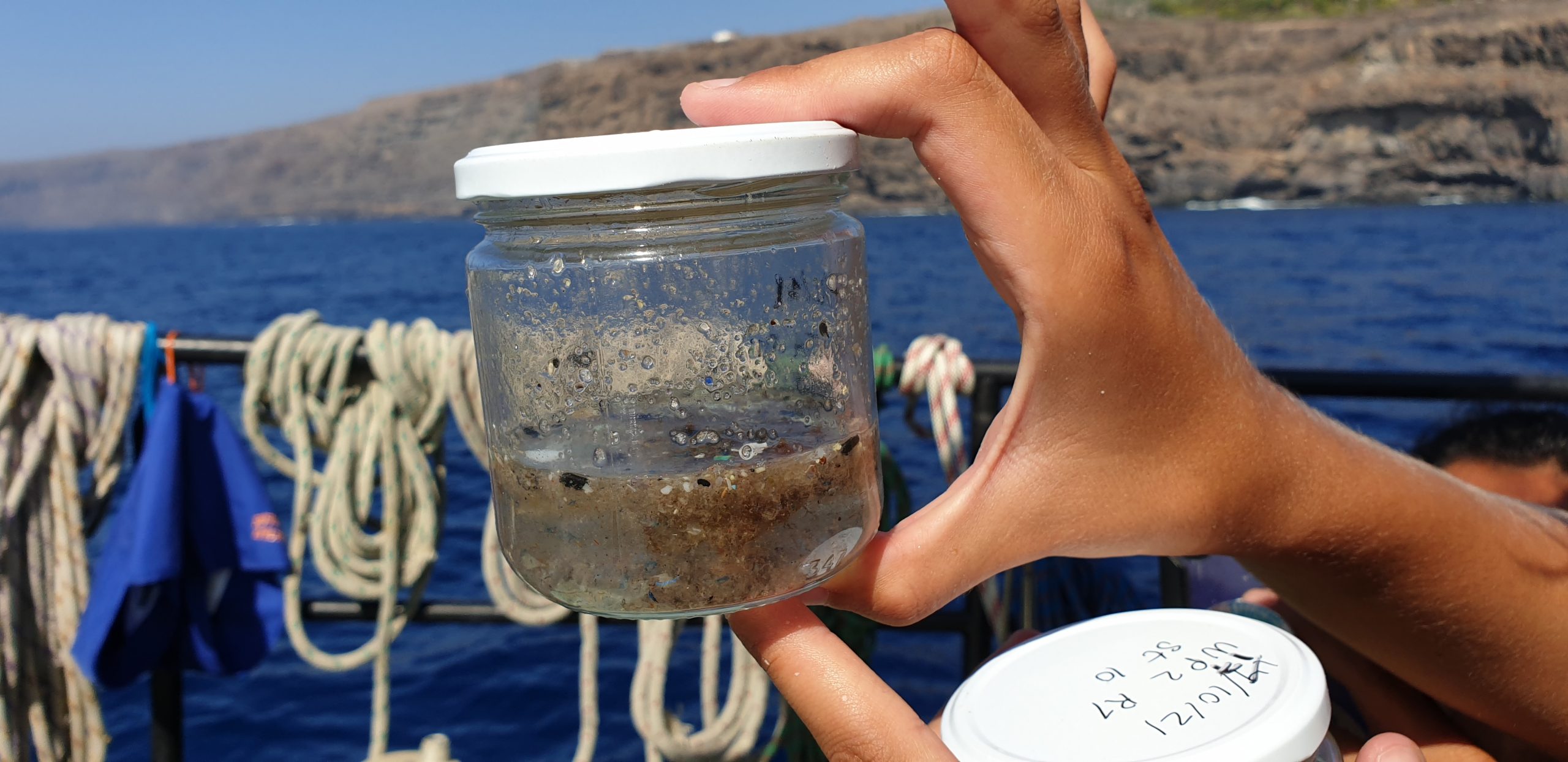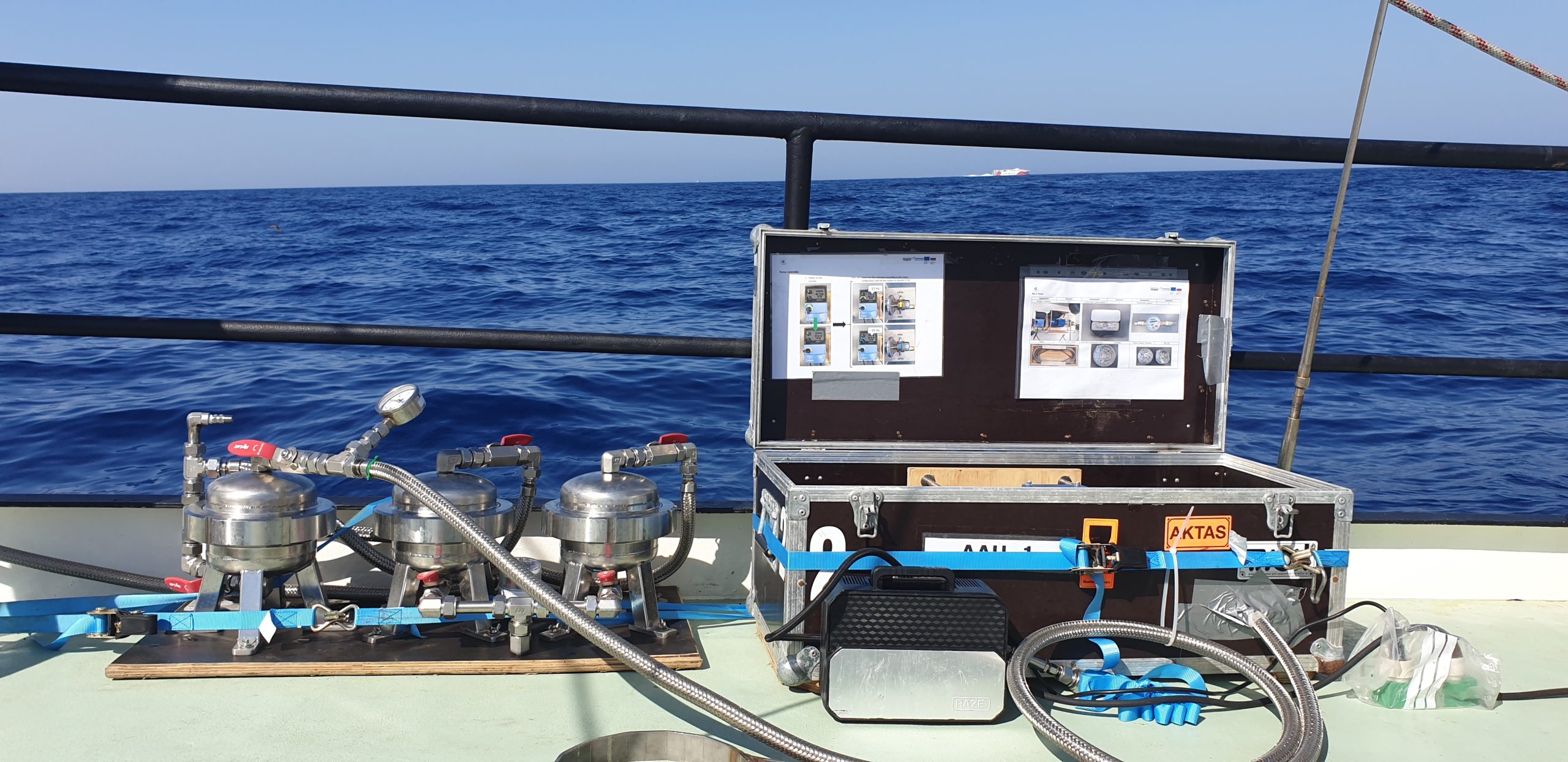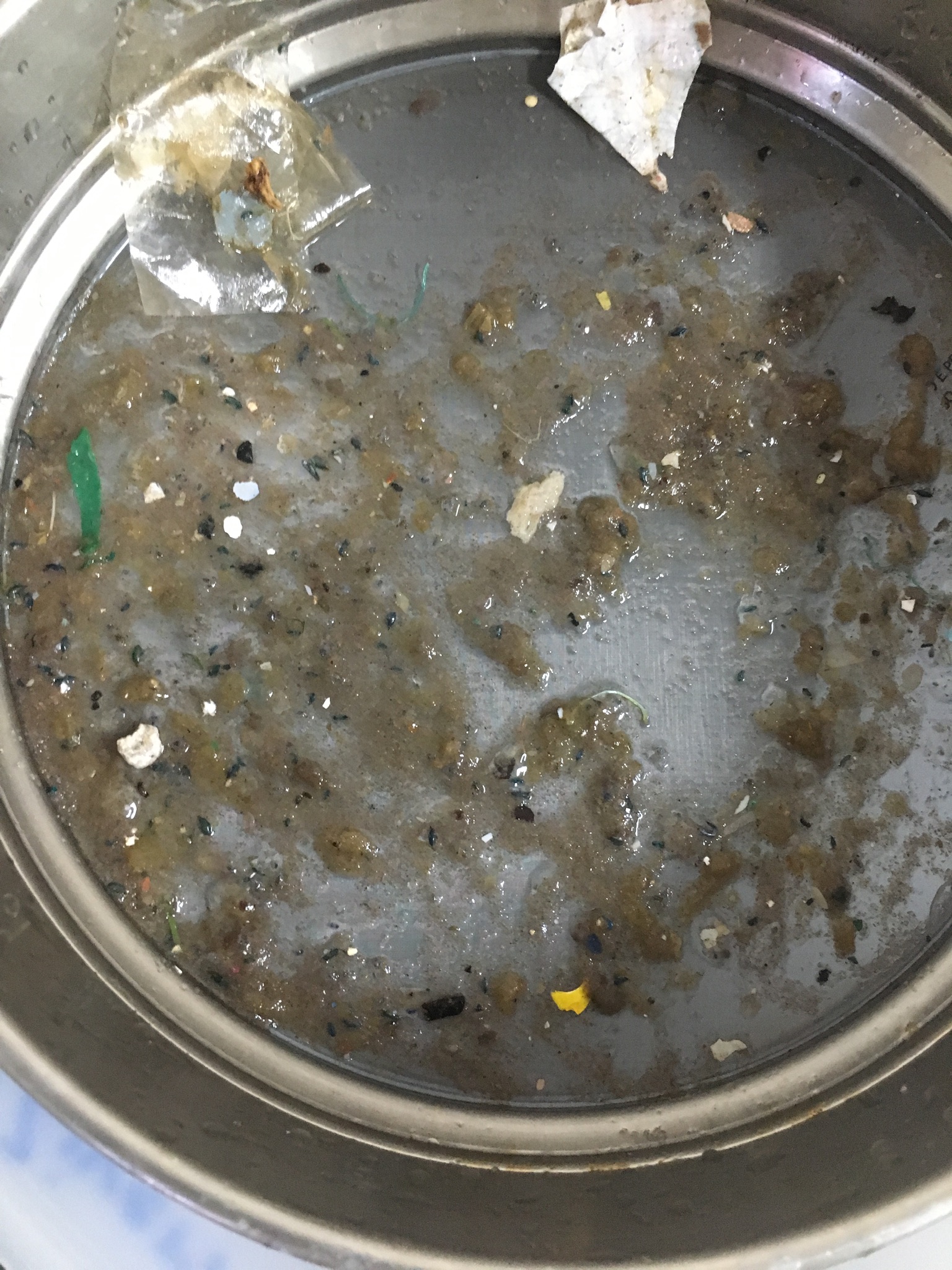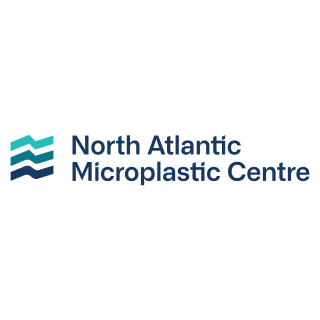Expedition dates: August 2 – August 7, 2023
Plastic pollution is pervasive in our Ocean. The most prevalent component of plastic pollution isn’t large pieces of trash floating on the surface, but tiny bits of waste called “microplastics” that are found throughout the water column. Ranging from 5 mm in diameter (a pencil eraser) down to 1 µm (a tenth of a hair’s breadth), this waste is created when larger plastics break down into smaller pieces by sunlight, water, and wave action. Microplastics are found throughout the entire Ocean, so studying them in the first few meters of water depth is, quite literally, just scratching the surface. To assess the presence of microplastics in the entire water column, Chief Scientist Laura Simon Sanchez, a National Geographic Explorer, and her team will go beyond the surface to study microplastics’ vertical distribution and movement from the surface to the seafloor. The trajectory of microplastic to the seafloor is a crucial, but underexplored, component of their global impact. What happens when microplastics eventually sink? What types of microplastics are in the water column, and where are they located? To answer these questions, the team will execute an ambitious sampling plan from Panama’s coast to the deep Ocean that utilizes an in-situ sampler called the McLane Pump and a filtration system aptly named UFO.
Omnipresent Microplastic
Five hundred years from now, a single-use water bottle that once decorated a roadside ditch will still exist, in some form, on Earth. Whether it gets picked up and recycled, is buried where it lies, or blows into a waterway is a story that will be told over the next seventeen human generations. The longevity of microplastic waste is an obvious issue, but less obvious is the innumerable ways it’s created—something as simple as laundering synthetic fabrics can introduce microplastic fibers into the environment. Because of this, microplastic pollution has been found everywhere from the Himalayas to the Marianas Trench. It touches all levels of Ocean ecosystems, and the impact can be severe: toxifying, starving, and suffocating marine life while possibly hindering the Ocean’s ability to act as a climate-regulating carbon sink.
Understanding the scope and implications of marine microplastic pollution is an enormous puzzle complicated by the typical challenges of studying the deep Ocean—difficulty with access, expensive and sophisticated equipment, and research time. The work of Dr. Simon-Sanchez and her team aboard R/V Falkor (too) will be an essential step in establishing foundational knowledge about how microplastics move through the water column.
Not Just Scratching the Surface
It’s estimated that over 10 million tons of plastic waste enters the Ocean annually. While scientists currently have a good overview of surface-level waste, recent studies suggest that the vast majority of plastic that’s entered the Ocean since 1950 (as much as 99.8%) has sunk below the surface layer—and this descent is understudied.
Examining microplastic movement requires contending with the Ocean as a vast and dynamic three-dimensional space stretching from surface to seafloor. Rather than sinking predictably, most microplastics likely don’t follow a straightforward downward trajectory. Their journey will be impacted by their properties—including size, shape, chemical composition, and level of degradation—along with interactions with Ocean currents and the living ecosystem. All these factors determine the path and potential final destination of microplastics. The key to understanding these movements is discovering where different microplastics are located throughout the water column—this is where Dr. Simon-Sanchez and her team will focus their efforts.
Studying the Ocean with UFOs and Krakens
Changing how microplastics are studied requires building new tools to address knowledge gaps and improve data collection. The major obstacle to studying microplastics in the water column is an issue of scale—getting large enough water samples and small enough filtration resolution. To tackle these challenges, the team will utilize novel equipment built explicitly for studying microplastics.
The UFO filtration system is at the heart of the expedition’s sampling strategy. Named for the classic sci-fi “UFO” shape of its three filtration chambers, it is capable of 300-, 10-, and even 1-µm filtration of large volumes of water samples. This scale will allow them to collect microplastics the width of three sheets of paper (300 µm) down to the size of microscopic phytoplankton (1 µm)—allowing for a much more comprehensive understanding of what plastics are in the water column. By connecting it to R/V Falkor (too)’s seawater intake, the team can gather microplastics at the sub-surface.
To collect microplastics down to 3,000 meters, the team will use a McLane pump sampler. A crane-deployed piece of gear, the McLane’s advantage lies in its ability to capture large volumes of water, and multiple McLane pumps used together are able to simultaneously sample across different depths. As the expedition transects from the coast of Panama to deeper offshore waters, the team will deploy the McLane and the CTD to collect water samples from matching depths—building an essential picture of what microplastics exist at different levels in the Ocean. What the team finds in the waters around Panama may be especially interesting, as an estimated 14,000 ships transit through the Panama Canal each year.
Data & Publications
ADCP data, curated by University of Hawaii, can be accessed here.
In the News
New research vessel helps scientists explore the oceans
CBS | September 9th, 2023
Scientists explore plastic trash crisis
CBS | October 18th, 2023
